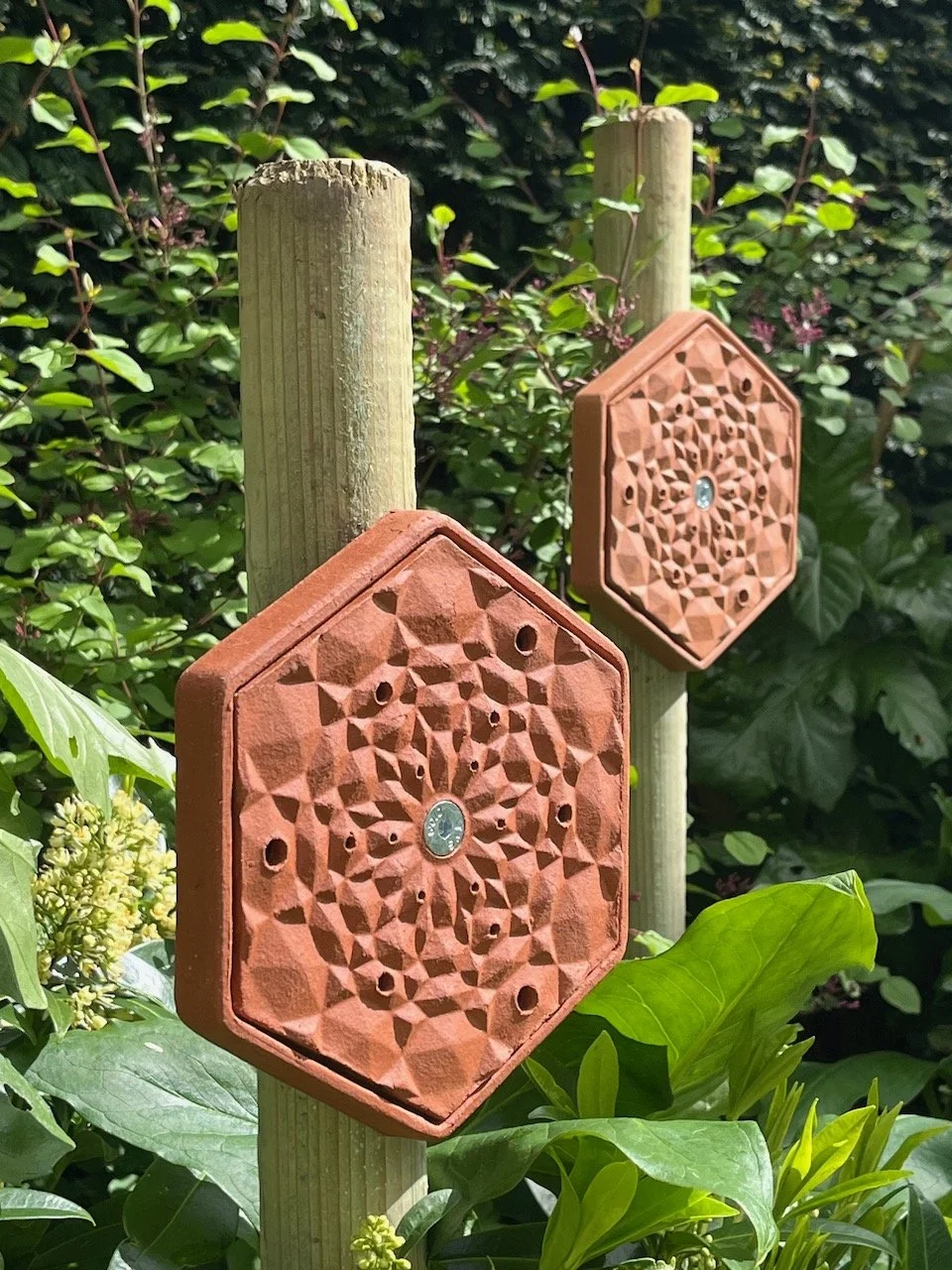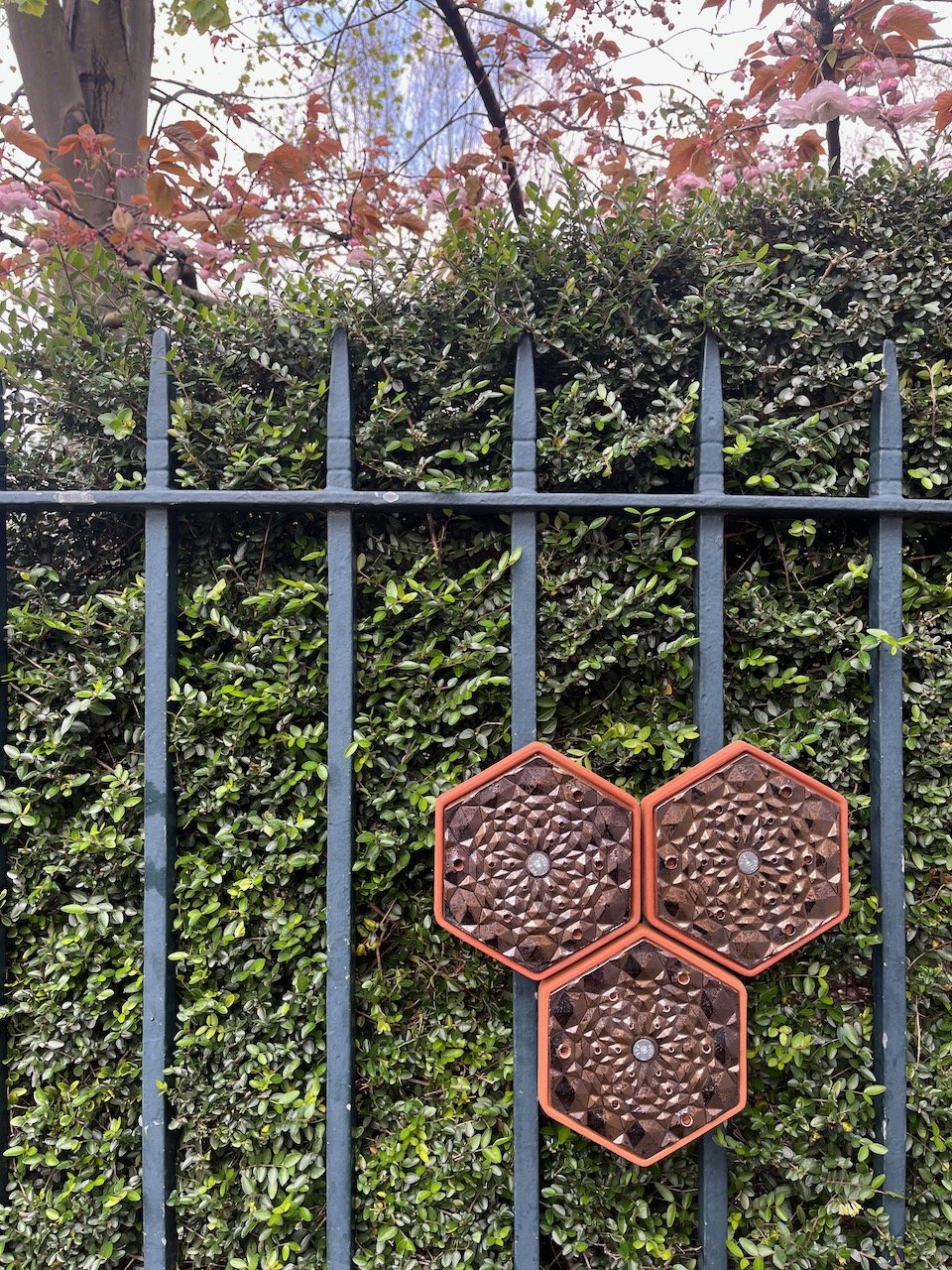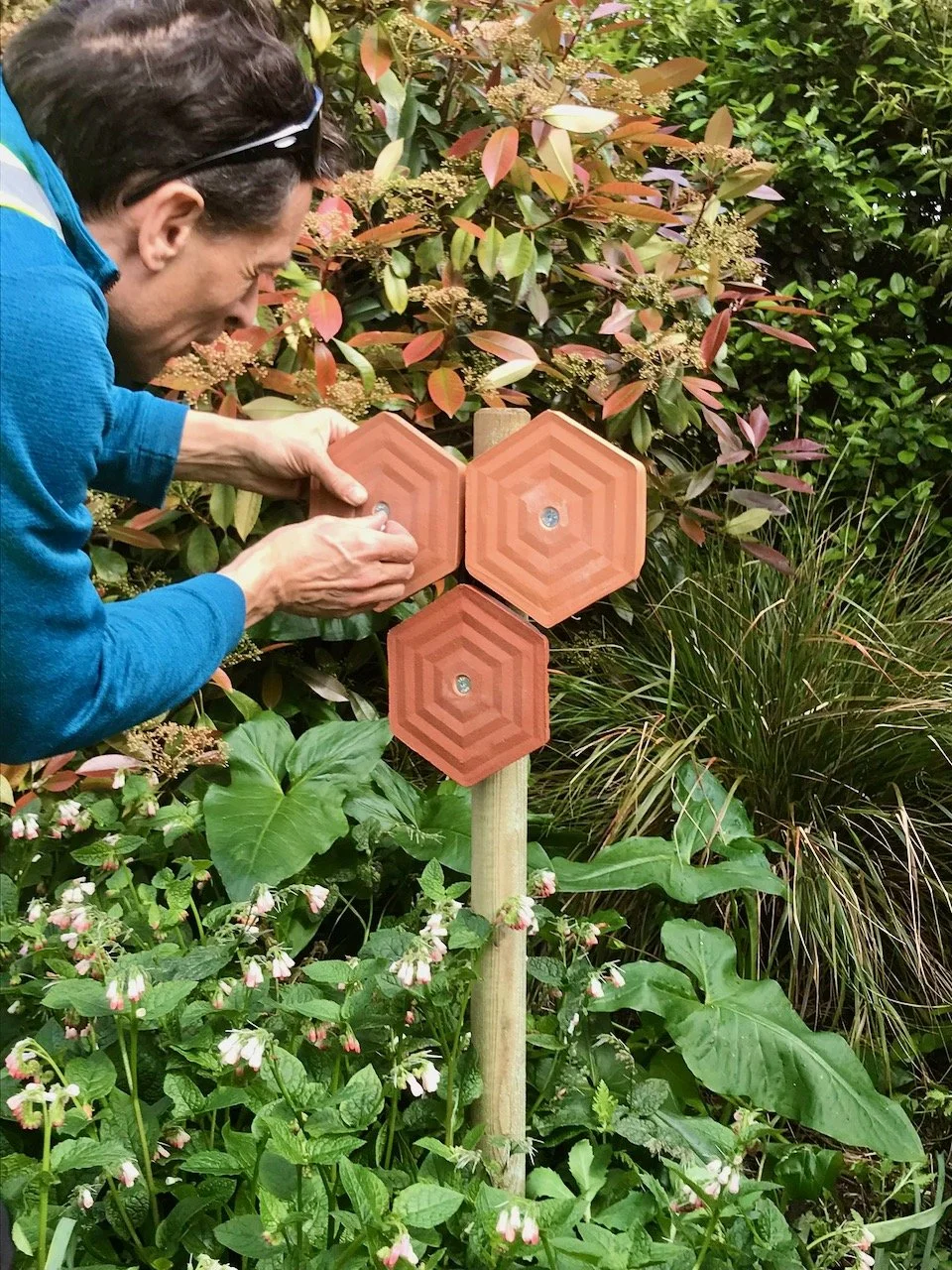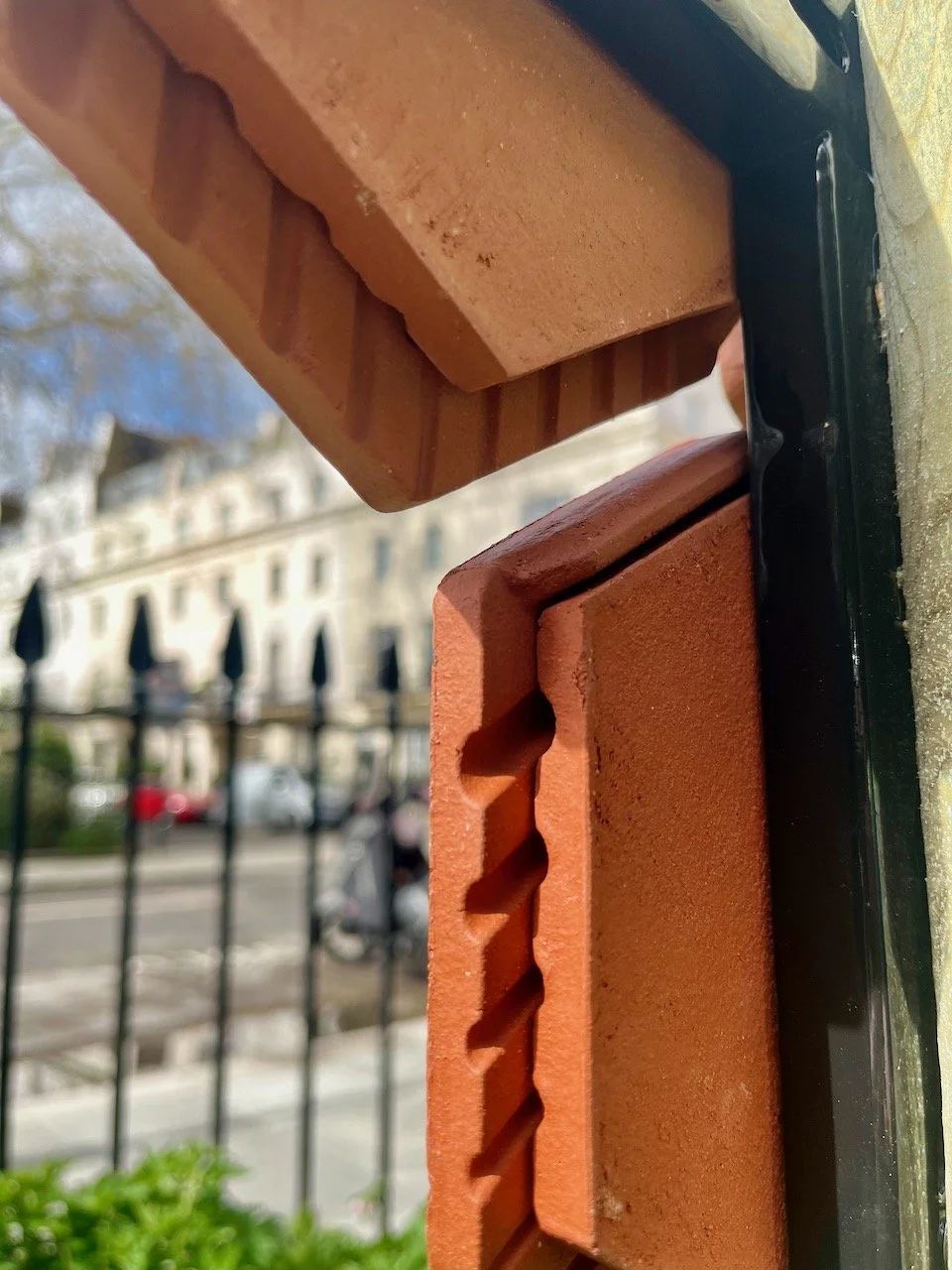
HexB Belgravia
2024
Material: Terracotta
Dimensions: Variable
Commission: Grosvenor Group
Location: Belgravia
-
There are 50 HexB tiles installed across parks and squares in Belgravia
Hex-B tiles can be mounted singly or in groups.
Groups of Hex-B tiles can be installed in complex hexagonal patterns to create interesting architectural features.
They can be mounted onto railings, walls, fences and posts, the fixing is a standard M8 machine screw.
Hex-B tiles should ideally be installed facing South, South West or South East in a sheltered sunny location.
A Hex-B installation should be combined with pollinator friendly plants. See the Wildlife Trust or the Royal Horticultural Society websites for suitable planting suggestions.
-
There are two designs; one with front entrances and one with side entrances. Each tile consists of two halves which fit together to create a set of bee nest cavities.
They are made of Terracotta, a naturally resilient material that can last for 100’s of years. They have two parts that can be separated for inspection, cleaning and harvesting the cocoons for overwintering.
They have a range of different size openings (2mm to 8mm) and nest cavities to appeal to different size Solitary Bees.
The surface decoration of the tile is designed to be attractive to both humans and insects and the material fits in with most garden settings.
-
HexB tiles were inspired by the growing environmental activity of providing nest sites for solitary bees. Most of the commercially available ‘Bee Hotels’ are more decorative than practical, so solitary bee enthusiasts are making and sharing their own nest variations to see what works best for their local bees. Interested in this practice, artist Will Nash decided to develop his own sculptural ideas for solitary bee architecture using Computer Aided Design and 3D printing to create pairs of Terracotta nest tiles that can be easily disassembled for the annual harvesting of the bee cocoons then cleaned for reuse.
HexB tiles have been developed with input from Helen Bostock, Senior Wildlife Specialist at RHS Wisley. -
Many plants require insects to pollinate their flowers and so complete their reproductive cycle – most plants cannot set seed without being pollinated (receiving the pollen, usually from another flower). Without bees, hoverflies and other insects visiting flowers, there would be no strawberries, apples, avocados, chocolate, cherries, olives, blueberries, carrots, grapes, pumpkins, pears, cotton, plums or peanuts…. And very few flowers in our gardens and countryside.
Solitary bees are not simply bees who have left the hive and are now alone. There are over 200 species of solitary bee and, as the name suggests, they live alone, although in truth they often nest close to one another. They do not produce honey, do not have a queen and do not live in hives.
It is estimated that 84% of EU crops (valued at £12.6 billion) and 80% of wildflowers rely on insect pollination.
Insect decline is also impacting birds, reptiles, amphibians and fish so even if you are not so keen on bugs, it is vital that we all act to conserve them. HexB Tiles are designed to raise awareness and inspire positive action on behalf of our insects.




